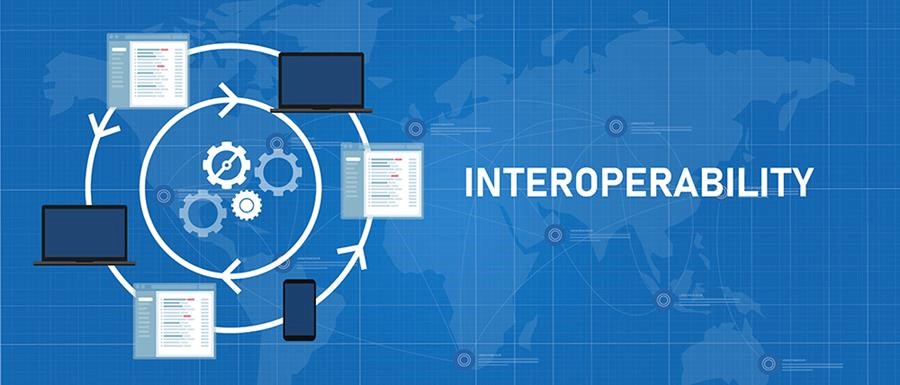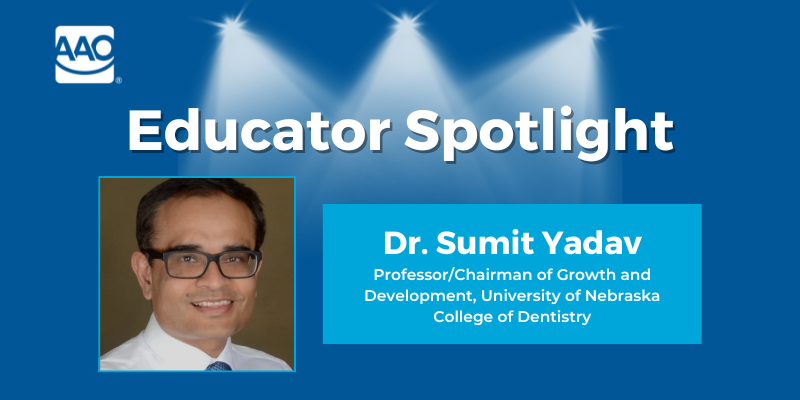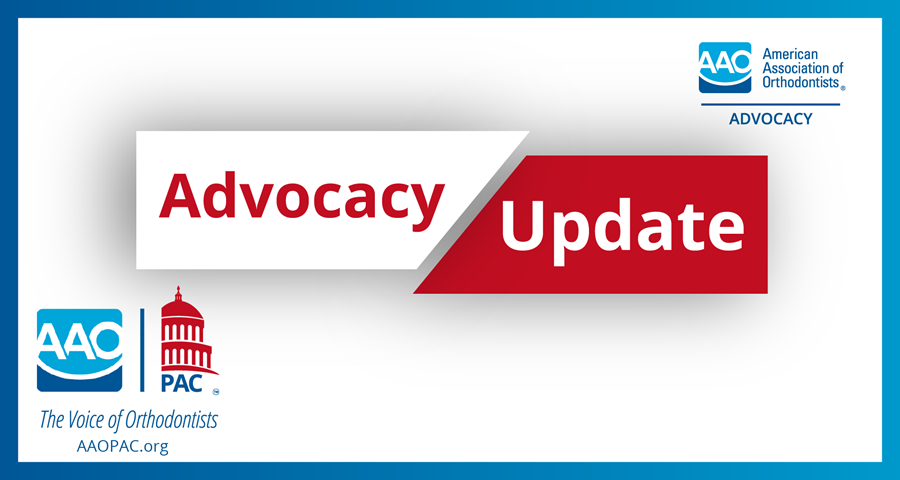As technology applicable to orthodontic practice has advanced exponentially in the 21st century, a key issue has had no resolution: communication among and between software products.
Orthodontists are all too familiar with this product limitation as they attempt to use patient data in various platforms to plan treatment and manage workflow processes. While each platform may work well for its intended purpose, it is common for platform data silos to consume time at virtually every treatment step, as doctors or team members must check or extract pieces of data before moving forward.
The AAO’s position on this issue was made clear by a 2022 AAO House of Delegates-approved resolution on the issue of interoperability:
“The position of the AAO will be that developers of orthodontic software should implement open and non-proprietary standards for data interoperability when available. In addition, the development of new open, non-proprietary data standards by stakeholders is encouraged.”
The AAO Interoperability Task Force is working to bring this perspective into the orthodontic software market. Led by Dr. Michael Durbin, chair, the task force includes Dr. Steve Robirds, Dr. Rolf Behrents, Dr. Carla Evans, biomedical engineer and medical software expert Toni Magni, and Mindi Brothers, AAO vice president of strategy and innovation. Dr. Evans and Mr. Magni also serve on the American Dental Association Integration of Orthodontic Standards Working Group of the ADA Standards program, along with Drs. Kirt Simmons, Holly Moon, Peter Mah and Andrew Casertano, all informatics experts. ADA committees and working groups address a variety of standards. For example, manufacturing standards established by committee processes ensure that any orthodontic wire approved by the FDA will fit any corresponding bracket.
The Orthodontic Standards Working Group relies on HL7 Clinical Data Architecture (CDA) and Fast Healthcare Interoperability Resources (FHIR) for exchange of clinical data in orthodontic practice. According to the National Institutes of Health Library of Medicine, HL7 CDA may be used to exchange progress notes, procedure reports and other patient information.
“It looks like the HL7 FHIR standard is the direction that data sharing is going,” says Mr. Magni. “The FHIR standard is not quite mature yet, but our goal is to incorporate it as the more modern approach likely to be used in the future.”
“It should be noted that even if the language of communication is open, the privacy of data remains protected by the access permissions of the software,” says Dr. Evans.
System Migration Challenges Come as Surprise to Many Orthodontists
In addition, the ADA Standards Orthodontic Working Group is advocating for open standards in the orthodontic practice management software sector. The industry’s proprietary business model makes this effort a challenge.
“The proprietary nature of the software means that it is developed in isolation without regard to other products,” says Mr. Magni. “This makes it difficult to extract patient data collectively, for example, when an orthodontist wants or needs to transition to a different software provider. This is a problem for medical software as well. Companies are very resistant because their proprietary business model has worked so well for them.
“Within the orthodontic specialty, I’ve observed that in many instances an orthodontist will assume that extracting and migrating a complete patient database will be a fairly simple, straightforward procedure,” adds Mr. Magni. “Then, when they wish to do so, they are shocked and frustrated to learn that is not the case. The only viable solutions may not be easy to accept. For example, you might hire someone to work full-time for several months mapping the fields, manipulating the data and extracting patient records from your current system, one patient at a time.”
Member Helps Pioneer Integration Solutions
Dr. Heather Hopkins of Lexington, South Carolina, has been a pioneer in resolving interoperability issues within orthodontic practice software systems. She encountered significant challenges due to the lack of interoperability among different software platforms used within her practice.
Traditional software systems often operate in silos, complicating the seamless transfer of patient data and leading to inefficiencies in patient care and practice management. Reflecting on the limitations of traditional software, Dr. Hopkins, who serves on the AAO Committee on Technology (CTECH), highlights the difficulties faced when attempting to base treatment decisions on real-time information.
“The absence of a unified information bridge between platforms presents significant challenges, particularly when trying to make timely treatment decisions,” she says. “The lack of real-time data flow makes it difficult to ensure that decisions are informed by the most current information.”
This situation underscores the urgent need for more integrated solutions within the industry. In response to these challenges, Dr. Hopkins has been instrumental in fostering innovative solutions. Her collaboration with Align Technology and Asana has led to the creation of Asana Smiles, an integrated workflow platform. This partnership signifies a significant advancement in orthodontic practice management, offering a unified system that streamlines patient data management across different platforms.
Asana Smiles enables orthodontists to track all digital patient information on a single dashboard, utilizing API keys to integrate diverse systems effectively.* This integration has transformed the approach to patient data management, simplifying workflows and enhancing the accuracy and accessibility of patient data. The shift from disparate systems to a unified platform like Asana Smiles represents a critical step forward in addressing the industry’s integration challenges.
Despite the progress made with Asana Smiles, Dr. Hopkins emphasizes that the journey toward full interoperability is ongoing.
“It’s a shame that a ready-made solution does not exist universally for small businesses or in the orthodontic world,” she says. The development of her practice’s centralized patient dashboard, which consolidates data from various platforms, exemplifies the type of innovation needed to overcome the industry’s longstanding barriers.
Dr. Hopkins’s experiences highlight the broader challenges faced by orthodontic practices and the need for continued efforts to develop comprehensive, integrated solutions that can address the complexities of modern practice management.
Next Steps in Addressing interoperability
The Orthodontic Standards Working Group emphasizes that it is necessary to use open-standards based architecture to store and share information. As the Orthodontic Standards Working Group continues its initiative, the AAO is working to engage with and educate the industry on the impact of non-interoperability on practices from the standpoint of time, expense and possible human error.
“There is also an ethical aspect of the interoperability issue that we want the industry to understand,” says Dr. Evans, who devoted many years to service in the ADA Standards’ Electronic Health Records (EHR) Working Group. “The proprietary approach used by the software companies compromises ease of access to information for the patient.”
AAO members are encouraged to follow updates on this issue that will appear as information becomes available but also, to consider communicating with suppliers about it. Even a simple statement to a salesperson when buying a system or platform reinforces the specialty’s effort to tackle this complex issue.
“For example, you might tell the salesperson you appreciated the demo on data input and visualization, while also requesting a demo on data export,” says Mr. Magni.
Watch for future updates on the AAO’s support of work on interoperability. Updates will appear in the eBulletin and in the Practice Management Bulletin.
The 2024 Orthodontic Informatics Meeting including the ADA Standards Orthodontic Working Group will be Sunday, May 5, 2024 from 8.am. – 12 p.m. at the Hilton New Orleans Riverside, Grand Salon 4 (1st floor), in conjunction with the AAO Annual Session in New Orleans. The Orthodontic Working Group meeting is open to all interested parties.
* Asana Smiles is used for managing Invisalign case workflow only.



